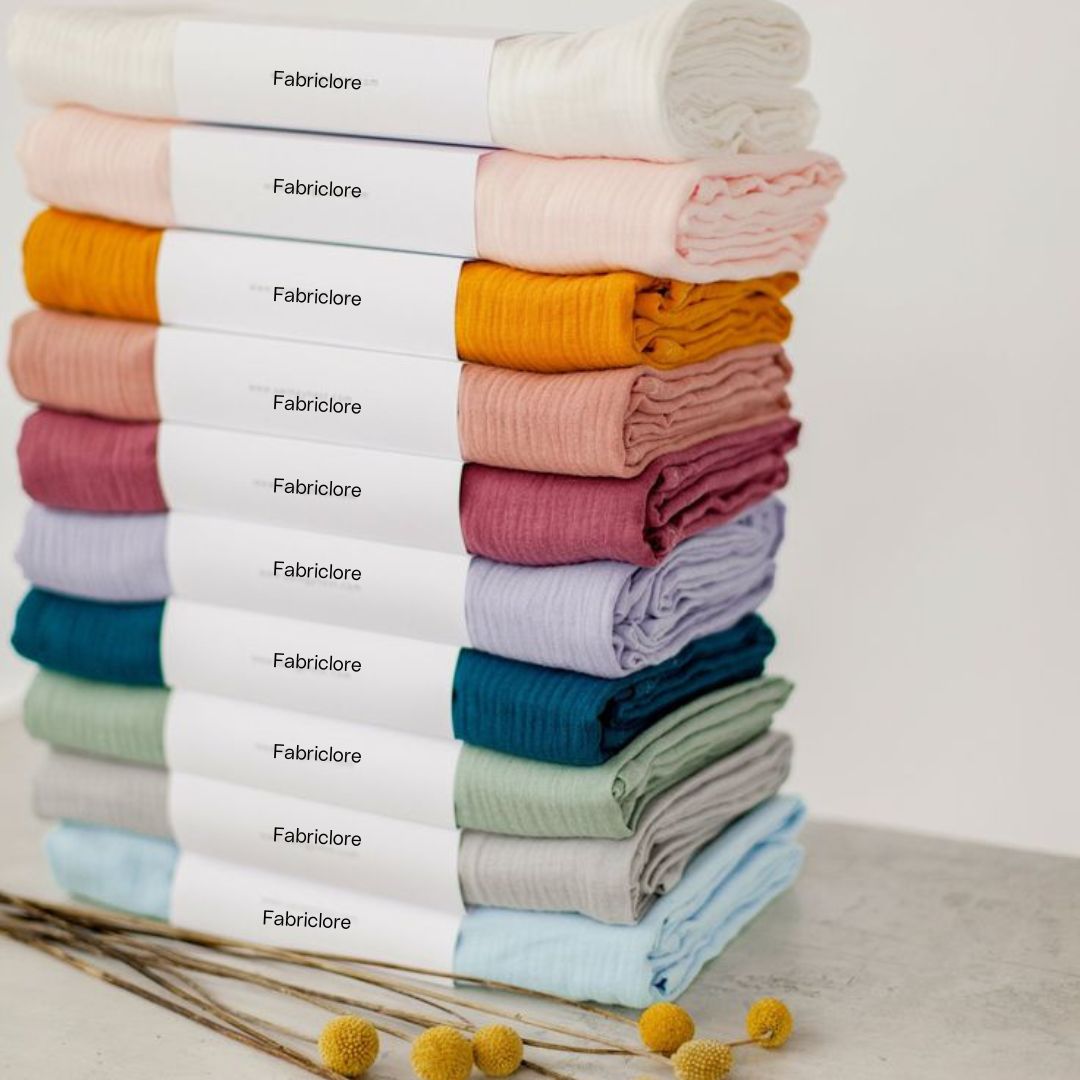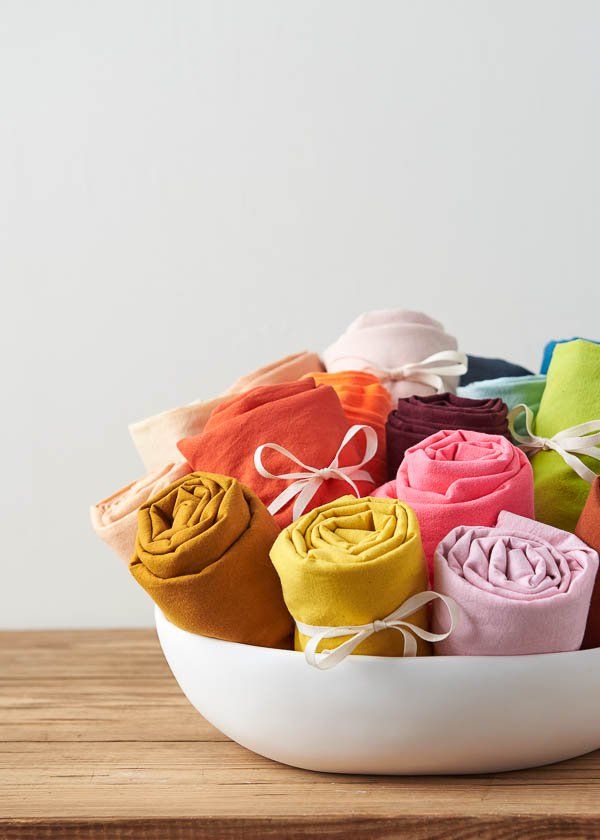Have you ever wondered why some brands seem to have that impeccable finish, while others are fraught with inconsistencies? The secret lies in maintaining premium quality every time. In the world of fashion, nothing speaks louder than the quality of your fabrics, making it paramount to be on your toes about it, whether you are a multi-brand retailer or a private label.
Imagine the disappointment of a customer who eagerly unwraps an attire they have waited a long time for, only to find a fabric that is low-quality and flawed. This doesn’t just cause irreparable damage to your brand’s reputation but also results in returns, negative reviews and lost sales. So, as a retail brand or fashion designer, how do you ensure top-notch fabric quality every time?
The answer lies in the 4-point quality inspection system, a tried and tested method that helps you detect defects in the fabric, ensuring only top-of-the-line ones make it to the production line.
What is the 4-Point Quality Inspection System?
The 4-point quality inspection system is a straightforward and reliable method for checking fabric quality. It assigns points to fabric defects based on their size and severity, with the aim of keeping the total defect points below 40 per 100 square metres. This helps ensure your fabrics are up to par before they become part of your products.
Here’s how the points are assigned.
- 1 Points – Defects less than 3 inches (7.6 cm).
- 2 Points – Defects between 3 inches (7.6 cm) and 6 inches (15.2 cm).
- 3 Points – Defects between 6 inches (15.2 cm) and 9 inches (22.9 cm).
- 4 Points – Defects over 9 inches (22.9 cm)
During the inspection, each defect is measured and given points according to these guidelines. The goal is to keep the total points low to ensure the fabric is of the highest quality. Widely used in the textile industry, this method is incredibly easy to understand and helps maintain consistency in standards for every piece of fabric. Additionally, this method helps detect flaws early, saving you the hassle of replacing finished products later and keeping your customers happy.
What Are The Key Points Of Deliberation?
To ensure impeccable inspection of your textile, these are the guidelines that need to be kept in mind.
- Inspection Speed – Move the fabric at a speed the customer approves.
- Lighting – Use white fluorescent lights, positioned perpendicular to the fabric. Angle the fabric at 45 degrees to get a better view as an inspector.
- Brightness – Make sure the area of inspection has at least 1075 lux of light.
- Distance – Inspect the fabric from a distance of 1 metre while it’s moving.
- Defects – Assign points for defects based on their length.
- Width – Assign four points for every metre where the fabric is narrower than the minimum width.
- Limit – Don’t assign more than four points in total.
- Visible Defects – Only note down defects visible on the fabric’s front unless agreed upon otherwise with the customer.
What Kind Of Flaws Can A Fabric Have?
Knowing the different types of fabric flaws is paramount to ensure every piece of fabric used in the production of your garments is impeccable. Here are a few common defects that inspectors should watch out for –
Holes Or Tears
These are obvious problems that can happen during manufacturing or handling of fabric. They come in a range of sizes and can seriously affect the usability and appearance of the fabric.
Stains Or Spots
Spills, dirt, or chemical reactions during the manufacturing process can cause stains and spots. Some of them can get quite noticeable and can ruin the look of the final garment.
Yarn Defects
These include slubs (thick places in the yarn), knots, and broken yarns. Such defects create a point of weakness in the fabric, affecting its durability in the long run.
Colour Variations
Inconsistent dyeing or printing can cause colour variations, causing an uneven appearance of the fabric. This can be a big issue for you if you intend your final garment to have a uniform look.
Weaving Defects
These defects occur during weaving and have an adverse effect on the final product if not detected early. Some of them are –
- Misweave -This means a departure from the normal pattern, creating irregularities in the fabric.
- Floats – Floats are basically yarns that skip over the other yarns, creating loops or bumps.
- Broken Picks – These are gaps in the weave due to broken weft yarns.
Misprints
Misprints happen if the print design is misapplied, resulting in off-center patterns, or incomplete prints. This can have a huge impact on the aesthetics of the final product, making it jarring to look at.
Creases And Wrinkles
Creases and wrinkles can form on the fabric during its handling and storage. While some fabrics can be pressed to remove them, others might be permanently damaged and need to be rejected.
Selvage Defects
These issues are usually found along the edges of the fabric roll, often due to improper tension or alignment during weaving. This issue can limit the fabric’s usable width, rendering a huge portion of the cloth unusable and costing you a lot of money.
Width Variations
Inconsistent width of fabric can occur during manufacturing, causing problems during cutting and sewing during the garment production process.
Knots
Knots in the yarn create uneven texture in the fabric. A result of tying broken yarns together during weaving, it can cause weak spots and hamper its durability.
Pilling
Pilling occurs when fibres on the fabric surface become entangled, forming small balls. It’s often caused by friction and can significantly affect the looks of the fabric.
Distorted Patterns
For patterned fabrics, any misalignment or distortion of the design is a flaw. This includes skewed patterns, mismatched patterns, and off-grain prints.
It is crucial for an inspector to pay attention to these details. This ensures improvement of product quality while elevating customer satisfaction and bolstering the image of your brand.
How To Implement The 4-Point Quality Inspection System?
Implementing the system in your fashion brand involves a few key steps to ensure excellent results. First, you’ll have to train a team that is knowledgeable about the different fabric defects and how to score them accurately. Next, ensure that they have the right tools to pull off the inspection process. Finally, make sure they inspect every inch of the fabric so that only the top-of-the-line fabric makes it to the production process. Choosing a premium fabric supplier for your brand can simplify the process significantly, guaranteeing top-notch textiles every time.
Why Choose Fabriclore Fabric For Your Brand?
At Fabriclore, we take quality very seriously. From cotton and silk to Viscose and Bemberg, we have 300+ certified high-quality fabrics for wholesale. Each meter of our made-to-order textile goes through a rigorous inspection and testing process through our 10,000 sqft warehouse, ensuring they are as flawless as your dream design. We source our textile from the most premium mills in the nation, guaranteeing traceable yarns and world-class weaving, delivering it to you in pristine condition. Our in-house inspectors scrutinise each meter of fabric, keeping an eye out for over 20 types of defects, material handling, colour bleeding, shrinkage, and colour handling.

Whether you are a fashion designer looking for the right cloth to make your masterpiece or an exporter seeking out fabrics with personalised prints, we offer it all. With custom dyeing and printing solutions, we simplify fabric sourcing for your business like no other.
Are you browsing for the right fabric supplier for your apparel business? Fabriclore is your one-stop destination. You can order many swatches online as you want, tailored just for you. Contact us through our website or WhatsApp to talk to our textile expert any time of the day. Or, better yet, drop by our studio cum experience Studio to find just the fabric you need to turn your dream into reality.



Leave a comment
This site is protected by hCaptcha and the hCaptcha Privacy Policy and Terms of Service apply.